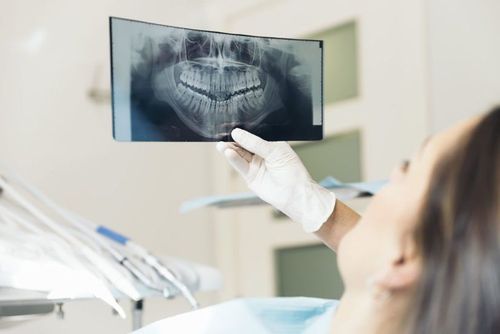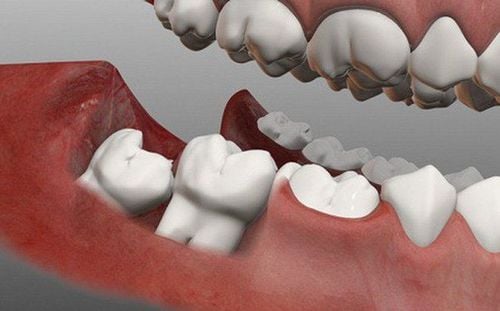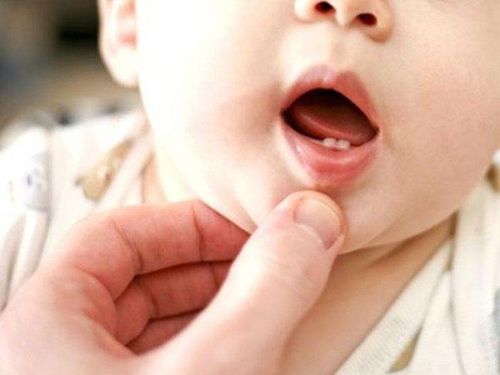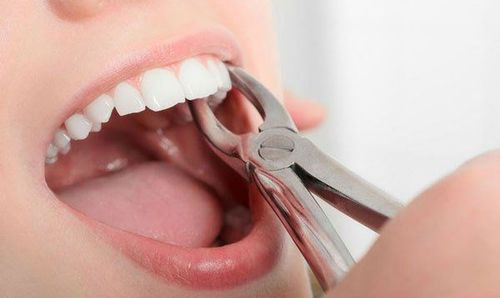This is an automatically translated article.
The article was professionally consulted by Specialist Doctor I Nguyen Trung Hau - Doctor of Odonto-Stomatology - Department of Medical Examination & Internal Medicine - Vinmec Da Nang International General Hospital.How to count teeth, how to read teeth and the names of teeth on the arch are basic knowledge about teeth that people often ignore, because most people are often only interested in services such as tartar, whitening. teeth, make porcelain teeth when learning problems related to teeth.
1. How to count teeth on the arch?
A normal adult's teeth include 28 - 32 teeth and are divided into 4 arches, from 1 to 4 for adults in a clockwise direction.To easily count the teeth in the 4 arches, we take the 4 incisors representing the first 4 teeth of each arch as a landmark in the middle. The incisors are called the first teeth in each arch. From the front teeth, count the teeth one by one to the back and you will know the order of your teeth.
Example of how to count teeth :
In the upper jaw, the upper right hand part will be the first jaw part (symbol I). The right middle incisor will have the number 1, the right tooth is the lateral incisor, the number 2 will be the same as the number 3. The same applies to the left upper arch and lower jaw.
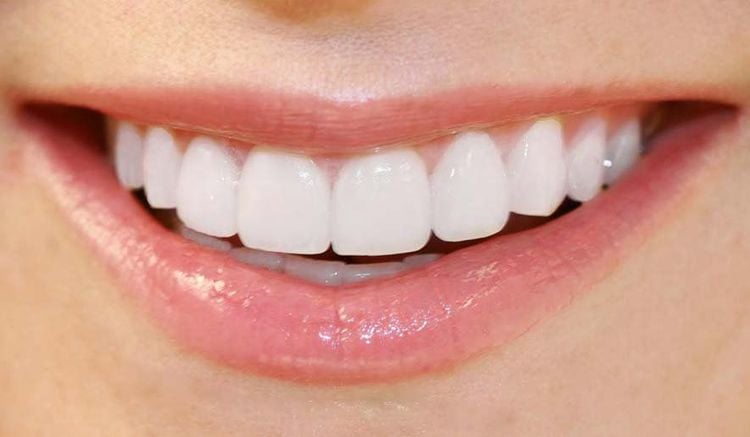
Hàm răng của một người trưởng thành bình thường gồm 28 - 32 chiếc
2. How to read teeth
Once you have mastered the basic way of counting teeth, reading teeth is also a completely easy task. How to read teeth is not as difficult as people often think it is to read 28 - 32 teeth with different names. To read teeth accurately, you just need to apply the following formula: R + arch (normal number) + tooth order.In which, R stands for Teeth, the order of teeth is the way to count teeth mentioned above. As for the arch as mentioned above, the upper right part will be the 1st arch, the remaining 3 parts will be marked clockwise.
For example:
The 3rd tooth on the upper left jaw is read as: R23 The 6th tooth in the lower right jaw is read as: R46 The 5th tooth in the upper right jaw is read as: R15 2nd tooth in the lower jaw below The left reading is: R32. For baby teeth, the way to read teeth is to change only the arch parts 1 2 3 4 by the numbers 5 6 7 8, and is understood as follows:
The first arch part of an adult tooth will be equivalent to the number 5 The 2nd arch of an adult tooth will be equivalent to the number 6 The 3rd arch of the adult tooth will be equivalent to the number 7 The 4th arch of the adult tooth will be equivalent to the number 8.
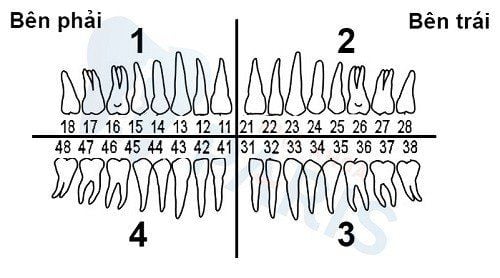
Cách đọc tên răng
3. Names of teeth
The human set of teeth is divided into the following types of teeth:Incisors: Includes the front teeth, including the middle incisors and the lateral incisors. As for the incisors, according to the tooth counting method, they are the teeth with ordinal numbers 1 and 2 in the arches with the order being the middle incisors and lateral incisors, respectively. For example, R22 is the symbol for the lateral incisors in the 2nd arch. Canines: are the 3rd premolars. two. As for the premolars, according to the counting method, they are usually the teeth with ordinal numbers 4, 5 in the arches. With tooth number 4 being the first premolar and tooth 5 being the second premolar. For example, tooth 44 is the first premolar in the 4th arch. Molar : The name of the teeth for main chewing. , used to chew and crush food, often called the first molar and the second molar. For the molars, it is usually the 6th and 7th teeth in the arches. For example, R46, R47 are the symbols for the first and second molars of the 4th arch, respectively. Wisdom teeth: are the last teeth to erupt, usually appear at the age of 17 - 26 or have possibly later. Also listed as molars, wisdom teeth have no definite shape and do not affect chewing. Wisdom teeth in most people often grow underground and affect the adjacent teeth, so they are often indicated for extraction. When there is pain in the jaw areas or when looking in the mirror, you see a tooth emerging at the back, you should seek advice from a reputable dentist.
Useful information on how to count teeth, read teeth, and how to name teeth in the complete adult dentition. The knowledge provided is simple but will be very useful in dental care.
BSCK I Nguyen Trung Hau has more than 10 years of experience working in the field of Odonto-Stomatology, Dr. Hau especially has a lot of experience in maxillofacial surgery, cosmetic dentistry, Implant implants. Currently, he is a Doctor of Odonto-Stomatology at the Inter-specialty Clinic of General Internal Medicine, Vinmec International General Hospital, Da Nang.
Please dial HOTLINE for more information or register for an appointment HERE. Download MyVinmec app to make appointments faster and to manage your bookings easily.




